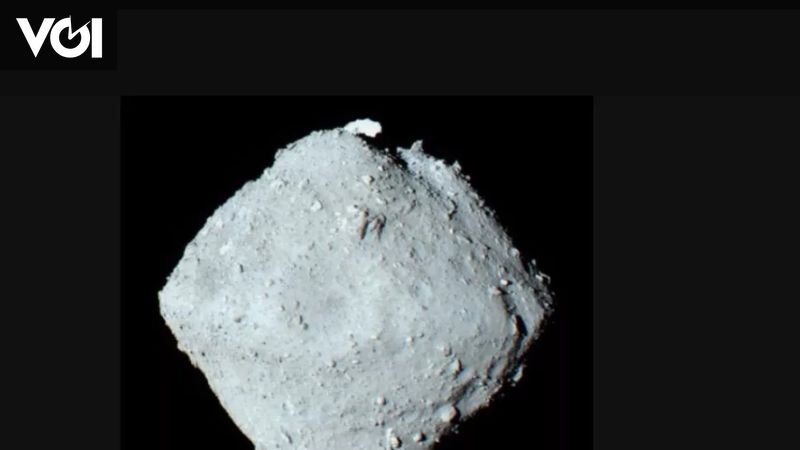JAKARTA – It’s been more than a year since the chunk of asteroid Ryugu was sent to Earth for research it has provided a glimpse into the origin of the Solar System, and how asteroids formed.
These tiny rock particles are the most ancient material ever studied on Earth. The asteroid rock was previously carried by the spacecraft, Hayabusa2 belonging to the Japan Aerospace Exploration Agency (JAXA) in 2019.
Hayabusa2 collected samples from the surface of Ryugu, and on December 6, 2020, they were successfully transported to Earth in an airtight container tucked inside a re-entry capsule.
An international team of scientists has revealed the results of analyzes carried out by the probe while at the asteroid site, where Ryugu appears extremely dark, highly porous, and contains some of the most ancient Solar System material they have ever studied.
While unexpected, the results were surprising, because asteroids have remained more or less unchanged since the formation of the Solar System 4.5 billion years ago, these samples are one of the best tools for understanding the composition of the dust in which objects in the Solar System coalesce. The research was made in two papers published in Nature Astronomy,
“The sample returned by Hayabusa2, appears to be one of the most primordial materials available in our laboratory. The sample is a uniquely valuable collection, which can contribute to revisiting the paradigms of the origin and evolution of the Solar System,” one of the scientists said in the paper. Science Al , Wednesday, December 22.
Asteroid Ryugu, formerly known as 1999 JU3, is the second asteroid to receive a sample return mission. Meanwhile, the first was Itokawa with its sample return mechanism that failed, producing only a few minutes of dust that finally reached Earth in 2010.
According to the paper, the asteroid Ryugu measures about 2,953 feet (900 meters) in diameter and orbits the Sun between Earth and Mars, occasionally crossing Earth’s orbit.
Scientists explain the carbon or C+type asteroids spin like a top through space, and like other C-type asteroids, Ryugu likely contains material from the nebula (a giant cloud of dust and gas) that gave birth to the Sun and its planets billions of years ago.
In total, the asteroid samples included about 0.2 ounces (5.4 grams) of material. The largest rock particles measure about 0.31 inches (8 millimeters) the smallest are less than 0.04 inches (1 mm) in diameter, so they resemble fine dust.
“To the naked eye, the sample looks like very dark chunks of black pepper,” said senior researcher at JAXA and first author of the second study, Toru Yada.
Launch Live Science, while they were working with space rock, Yada and his colleagues stored the material in a vacuum or in a closed environment filled with pure nitrogen.
“Thus, the Ryugu samples were handled without contaminating them with Earth’s atmosphere,” Yada said.
The scientists examined the samples using optical microscopes and a variety of instruments that measure how rocks absorb, emit and reflect different wavelengths of light in the visible and infrared spectra.
Asteroids’ pitch black material reflects only about 2 percent to 3 percent of the light that hits them. This finding suggests that the rock is very porous, meaning that between the grains of material in the rock there are many pockets of empty space that allow water and gases to seep in.
In the second paper, a team led by astronomer Cédric Pilorget of the Université Paris-Saclay in France analyzed the composition of the dust. They detected that the asteroid appeared to be composed of a very dark matrix, possibly dominated by phyllosilicates, or clay-like minerals, although there were no obvious signs of hydration.
Within this matrix, they identified inclusions of other minerals, such as carbonates, iron, and volatile compounds. The two papers agree that, in porosity and composition, Ryugu appears to most closely resemble the type of meteorite classed as CI chondrites.
This means that the meteorite contains carbon, and is similar to the Ivuna meteorite. When compared to other meteorites, Ryugu has a very similar composition to the Sun’s photosphere, indicating that they are the most primitive of all known space rocks.
– .


